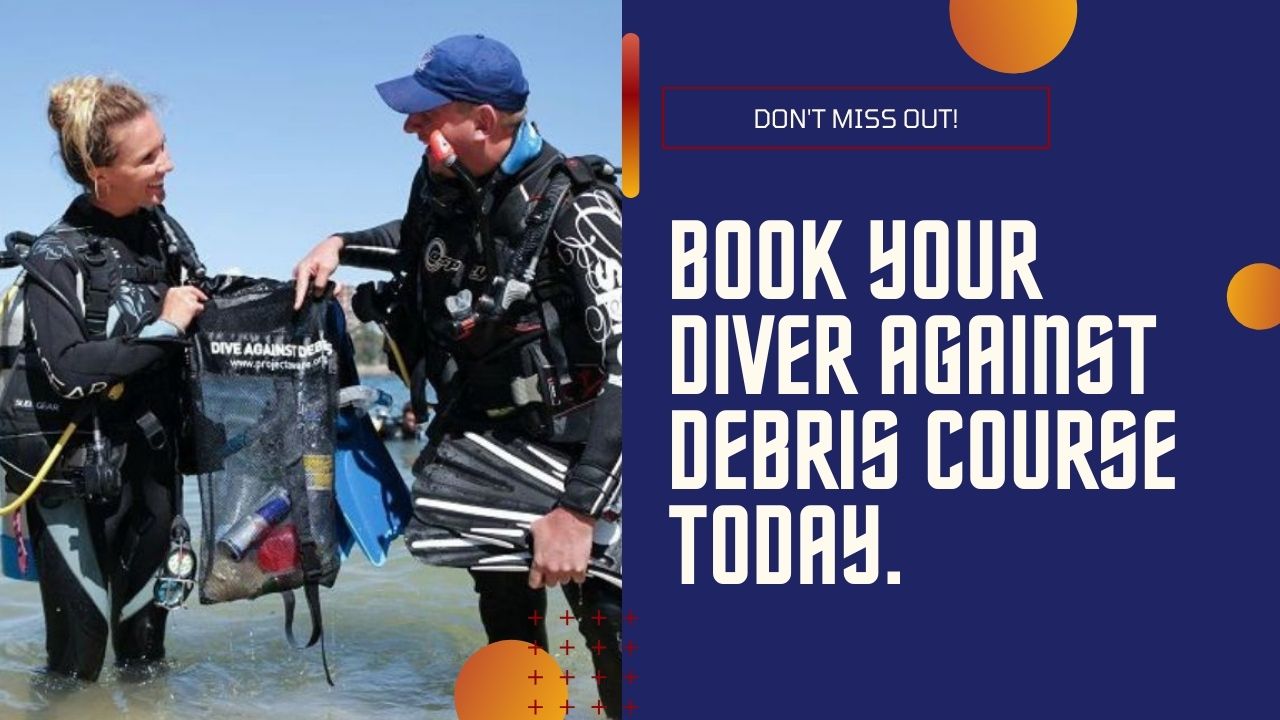You have 0 product(s) in your cart.
Abyss Scuba Diving
The Rising Tide Of Marine Debris: Understanding And Combating Ocean Pollution
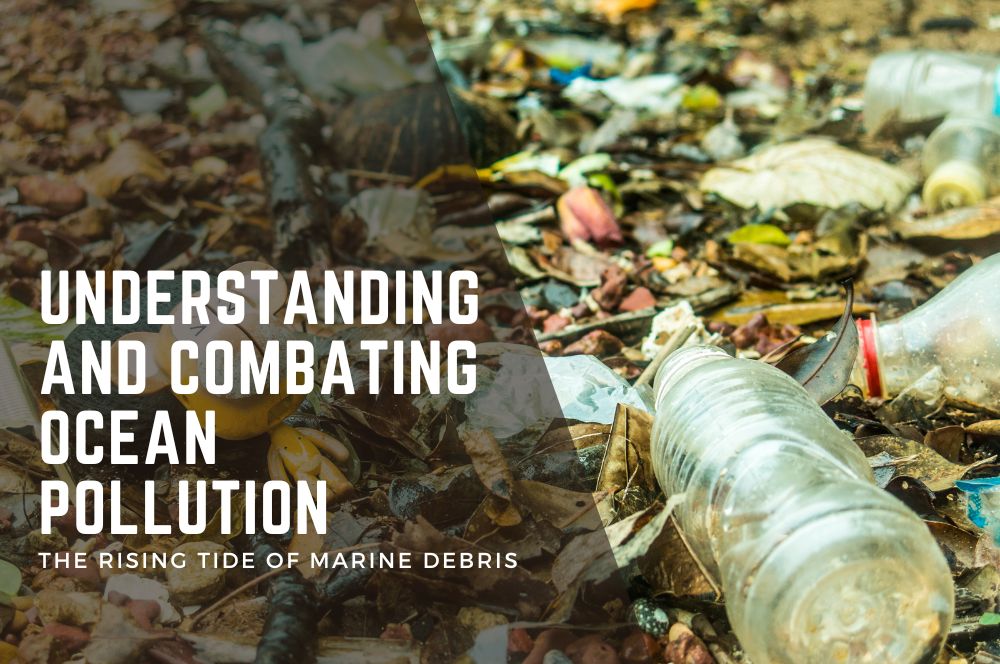
The Rising Tide of Marine Debris: Understanding and Combating Ocean Pollution
Marine debris, the unwanted remnants of human activity, has insidiously pervaded our oceans, threatening marine life and our health. This article investigates the myriad sources contributing to this silent crisis, assesses its profound repercussions, and highlights collective efforts to tackle the floating menace. Join us to uncover how global action is making a difference.
Key Takeaways
-
Marine debris, primarily plastic waste, poses a severe environmental crisis affecting marine wildlife and ecosystems. It's estimated that 400 million metric tons of plastic are produced annually. With less than 0.5% of this production ending up in the ocean, this still translates to over 1 million metric tons of marine debris.
-
International cooperation is key to combating marine pollution, with efforts such as the anticipated global plastics treaty to regulate plastic life-cycle and UN resolutions to reduce marine litter, highlighting the need for comprehensive governance and accountability.
-
The Dive Against Debris initiative by PADI AWARE involves divers globally in underwater cleanups and data collection to inform policies, with over 37,000 sea creatures rescued and over 2 million pieces of debris removed, showcasing the significant impact of collective conservation efforts.
The Peril of Plastic in Our Oceans
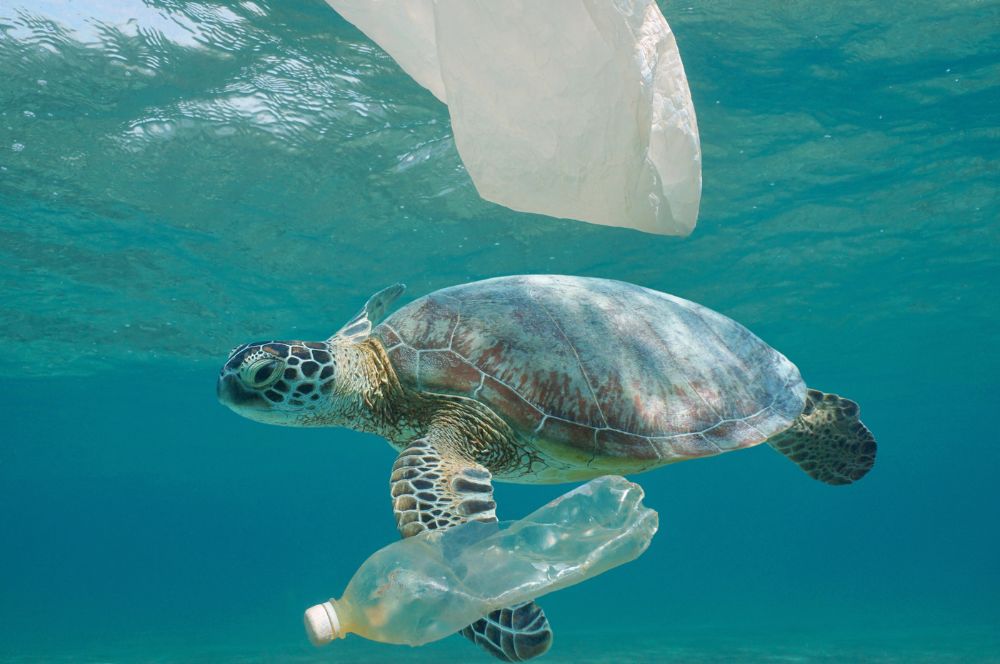
It’s hard to imagine a world without plastic. This versatile material has revolutionised industries, from healthcare to aerospace. However, our reliance on disposable plastic products has birthed a global pollution issue, with over 400 million metric tons of plastic produced annually. Less than 0.5 percent of this colossal amount ends up in our oceans, translating to over 1 million metric tons of marine debris. Alarmingly, around 90% of visible marine debris is discarded plastic, evident in massive accumulation areas like the Great Pacific Garbage Patch.
The marine environment and its inhabitants, including various marine organisms, bear the brunt of this pollution. From tiny plankton to majestic whales, marine wildlife is suffering significantly from marine debris through ingestion, entanglement, and habitat disruption. The sheer volume of plastic waste in our oceans is not just an environmental issue; it’s a crisis that’s disrupting entire ecosystems and impacting marine life.
But where does all this plastic come from, and how does it end up in our oceans? Let’s unravel this journey.
The Invention and Proliferation of Plastic
The invention of plastic was truly revolutionary, enabling the development of life-saving medical devices, facilitating space travel, and creating systems for clean drinking water. Over time, plastic found its way into nearly every aspect of our lives. From the phone you’re holding to the plastic bags you use for groceries, plastic is everywhere. The convenience and versatility of plastic, especially single-use plastics, have led to a throw-away culture. Today, plastic waste is one of the most pressing environmental challenges we face.
About 40 percent of the plastic produced every year is composed of single-use plastics, making it a significant contributor to marine pollution. The majority of these items are used once and then discarded, ending up in landfills, rivers, and eventually, our oceans. As consumers, we must acknowledge the whole life-cycle of plastic products, from their design to end-of-life, to shift towards more sustainable consumption patterns. Embracing alternatives to single-use plastic items, such as stainless steel straws, bamboo utensils, and glass containers, can significantly reduce personal contributions to marine debris.
Tracking the Journey: From Landfills to Ocean Currents
Plastic doesn’t just magically appear in our oceans. It embarks on a perilous journey from our landfills, through our rivers, and is carried by ocean currents into the marine environment. Heavy rain events can surge plastic emissions by up to tenfold as waterways carry trash into the ocean. The proximity of plastic waste to rivers and the ocean increases the likelihood of it reaching marine environments. Moreover, the debris that enters the ocean does not always stay on the surface. Nearly half of the plastic that enters the ocean sinks immediately due to low buoyancy, while the remainder can beach on coastlines or become trapped in ocean gyres.
Understanding this journey is critical to mitigating the issue. It’s not just about cleaning up the debris; it’s about stopping it from reaching the oceans in the first place. We must focus on improve solid waste management, particularly in areas close to rivers and coasts, to prevent the escape of plastic waste into the marine environment.
When we understand the journey of plastic waste, we can implement targeted strategies to intercept it along its route, reducing the amount that reaches our oceans.
The Visible and Invisible: Macro and Microplastics
When we think of marine debris, we often visualise large pieces of plastic floating on the ocean’s surface or washed up on beaches. However, there’s another side to the plastic pollution story – the invisible threat of microplastics. These are small plastic particles often less than one fifth of an inch across, originating from the breakdown of larger plastic waste or manufactured at a microscopic size as in the case of nurdles and microbeads.
Microplastics pose a significant threat to aquatic species, which often mistake these small particles for food. This ingestion leads to:
-
blocked digestive tracts
-
pierced organs
-
altered feeding impulses
-
in severe cases, death
But it’s not just marine life at risk. Microplastics have been detected in human blood, lungs, and feces, raising urgent questions about their potential effects on human health. The issue of microplastics illustrates that the plastic pollution problem is not just visible but also invisible, seeping into the very fabric of our ecosystems and bodies.
Dive Against Debris: A Global Movement
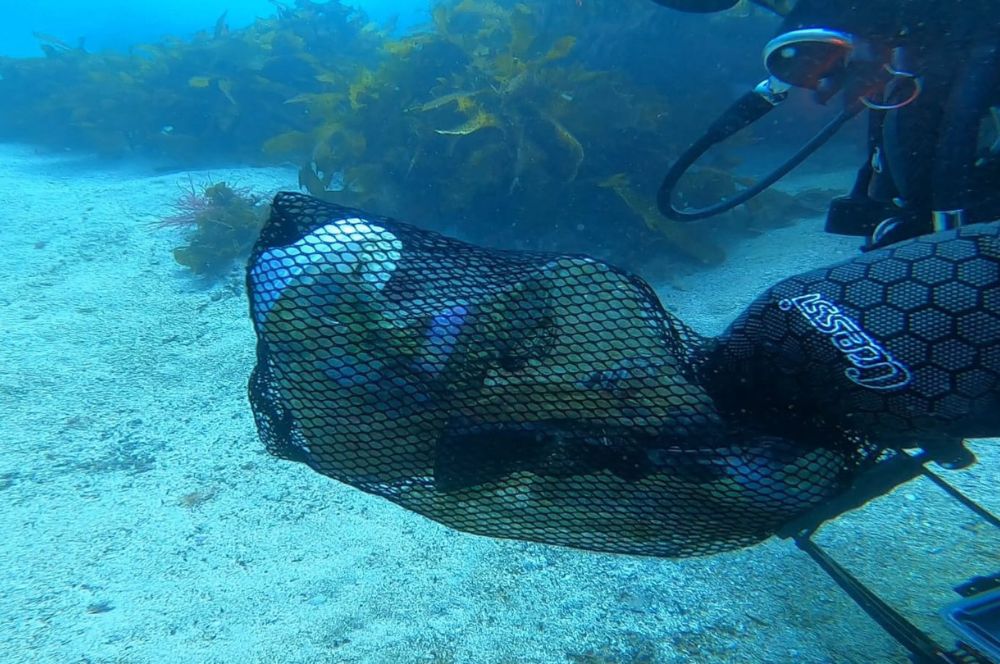
As daunting as the marine debris issue is, there’s a global movement rising to meet the challenge. Dive Against Debris, an initiative by PADI AWARE, is the largest underwater cleanup operation globally. It’s not just about removing debris; it’s about using the findings to inform ocean-friendly policies. The data collected from Dive Against Debris surveys are essential for tracking marine debris on the seafloor and ensuring accurate reporting, which includes detailed instructions for reporting the weight and coordinates of debris collected during each dive. This valuable information contributes to the largest global underwater database, helping to drive impactful changes in ocean conservation.
Partnerships play a crucial role in the success of this initiative. Seiko supports the Dive Against Debris efforts in partnership with PADI and the PADI AWARE Foundation, assisting in removing debris and using the collected data to advocate for ocean-friendly policies. Participants are encouraged to share their cleanup stories and data through blogs on their My Ocean account and by using specific hashtags while tagging PADI AWARE on social media. But how can you become a part of this global movement?
Uniting Divers Worldwide
The beauty of the Dive Against Debris initiative is that it unites divers worldwide under a common goal – marine conservation. Seiko’s partnership with the PADI AWARE Foundation’s Marine Debris Program demonstrates the pivotal role of industry collaboration in supporting the international conservation efforts of the Dive Against Debris initiative. Divers from all corners of the globe are actively contributing to marine conservation by submitting valuable data from the Dive Against Debris surveys, which track debris collected from the ocean floor.
The PADI AWARE Dive Against Debris program leverages an extensive global network that includes over 128,000 PADI Professionals and 6,600 dive operators worldwide. By uniting under a common cause, divers worldwide are making a significant impact on marine conservation, demonstrating the power of collective action. But what does this impact look like in numbers?
Rescues and Results: Impactful Statistics
The Dive Against Debris program has made waves with its significant results, addressing marine debris issues effectively. More than 37,000 sea creatures have been rescued by the program, highlighting its positive impact on marine life. Furthermore, Dive Against Debris has successfully removed over 2 million pieces of marine debris, with marine debris found in various locations, demonstrating the extensive scope of its clean-up efforts.
The program has also established specific protocols for data submission, ensuring that the marine debris data collected is unique and reliable. The data gathered is utilised to inform and enhance marine debris management strategies, offering valuable insights for scientific research and conservation actions. But how can you become a part of these impactful statistics?
Becoming a Debris Diver
Becoming a debris diver is more straightforward than you might think. Junior Open Water Diver or higher can take the Dive Against Debris Specialty course to become certified as a debris diver. This certification allows participants to engage in regular Dive Against Debris surveys, making them an active part of the solution to marine pollution.
In addition to becoming a debris diver, individuals interested in marine debris can find additional information and get involved through partners and stakeholders. Through these efforts, you can become part of a global community of divers committed to making a difference. But what can we do beyond diving?
Empowering Actions Against Marine Pollution
Aside from diving against debris, there are several other ways we can combat marine pollution and reduce marine debris. Here are some suggestions:
-
Reduce plastic consumption by opting for sustainable choices and being a conscious consumer
-
Participate in beach clean-ups
-
Ensure proper waste disposal
-
Support recycling
By taking these actions, we can prevent pollution from harming marine life and contribute to cleaner ocean ecosystems on our ocean planet.
Progressive strategies such as improved waste management systems, adoption of recycling practices, and innovative policy solutions are crucial for preventing plastic waste from entering waterways. Citizen science initiatives enable individuals to connect with researchers and contribute valuable data on marine debris, leading to broader insights into waste management challenges. Supporting coastal zone enhancements and clean beach programs forms an essential part of community efforts to minimise the threat of marine litter.
So, how can you contribute?
At Home and Abroad: Reducing Plastic Use
Reducing plastic use starts with making conscious choices at home and while travelling. Here are some ways to reduce personal contributions to marine debris:
-
Opt for reusable items like stainless steel straws, bamboo utensils, and glass containers.
-
Bring reusable items for drink purchases.
-
Use planet-friendly decorations.
By adopting these sustainable practices, you can help keep the local marine environment free from pollution.
At the same time, we need to rethink the way we design, produce, and dispose of plastic products. This means transitioning from a linear, throw-away culture to a circular economy where waste is minimised, and resources are kept in use for as long as possible. This shift requires concerted effort from all stakeholders, including governments, businesses, and individuals.
Community Cleanups: Every Dive Can Make a Difference
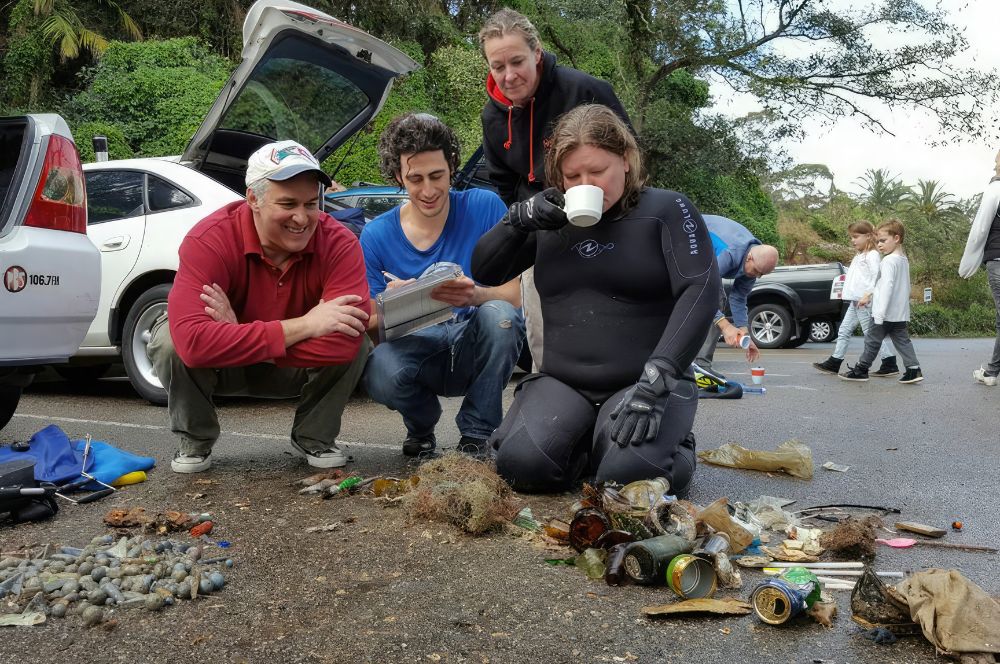
Community cleanups play a key role in maintaining cleaner waterways and reducing marine debris. Divers participating in organised cleanups are instrumental in removing debris, leading to healthier marine ecosystems. Community programs like Adopt-a-Beach and beach certification efforts increase public awareness and motivate action to combat marine pollution.
Beach cleanups and pollution monitoring create opportunities for individuals to contribute to identifying sources of pollution and assessing coastal ecosystem health. Moreover, marine debris surveys help protect and enhance local economies by fostering cleaner waterways that benefit tourism and commercial fishing industries. Through these collective efforts, every dive and every individual can make a difference in the fight against marine pollution.
Legislative Leaps for Cleaner Seas
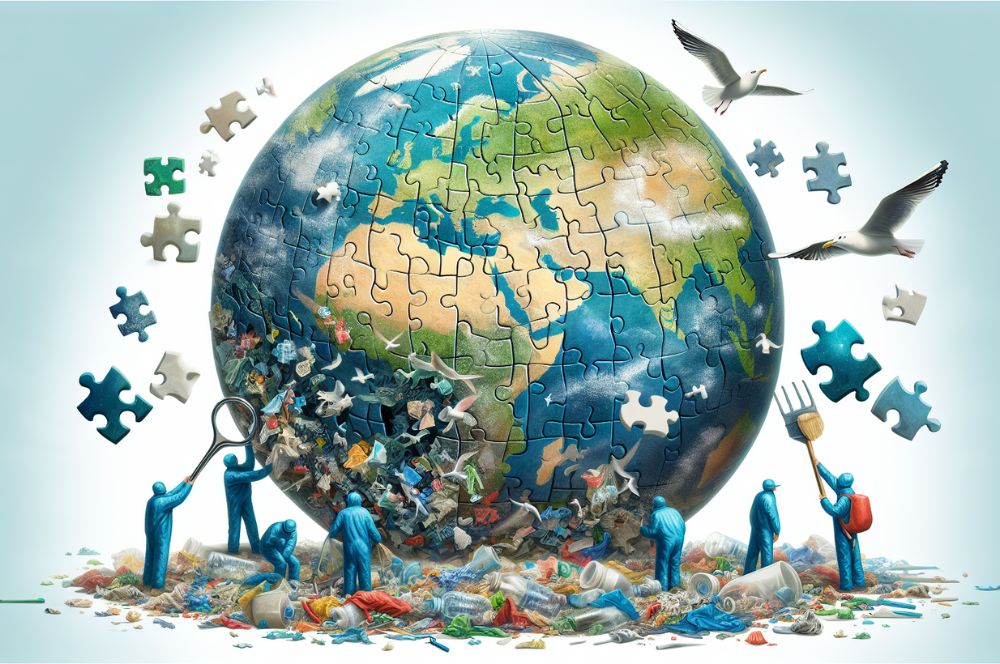
Aside from individual and community efforts, international cooperation is crucial for tackling the issue of marine pollution. Currently, international negotiations are underway to develop a legally binding global plastics treaty intended to address the entire life cycle of plastics, including their production, design, and disposal. International efforts to address marine litter and microplastics have evolved through a series of resolutions at the UN Environment Assembly, leading to an increased understanding of the problem and an emphasis on the need for coordinated global governance.
The treaty is expected to be finalised in 2024 and is anticipated to impose transformative regulations on waste management, reduce single-use plastics, and promote circular economy principles. Moreover, the treaty aims to decrease plastic pollution and set up a cooperative monitoring system.
Let’s delve deeper into the role of international cooperation and commitment in tackling marine pollution.
International Cooperation and Commitment
The United Nations Environment Assembly has passed significant resolutions since 2014, with a global vision to prevent any plastic litter or microplastics from entering the oceans. One of these is the establishment of an expert group to recommend solutions for marine plastic pollution, emphasising standardised monitoring and accountability in international governance strategies.
In addition, the implementation of the UN plastic treaty is anticipated to lead to a reduction of problematic plastics and the removal of harmful chemicals from product supply chains, enhancing accountability. In March 2022, the United Nations Environment Assembly adopted a resolution to form an internationally binding treaty aimed at addressing the issue of marine plastic debris by 2024. These initiatives highlight the role of international cooperation and commitment in combating marine pollution.
Monitoring and Accountability
Monitoring and accountability are vital for the successful implementation of any international treaty. Standardised adventure dives provide a structured approach to training citizen scientists in collecting critical survey data. Accurate and consistent critical survey data is crucial for tracking marine debris and understanding its impact on marine ecosystems.
By following internationally recognised standards, diver surveys can produce reliable data that supports the enforcement and effectiveness of the international treaty on marine debris reduction. Moreover, the integration of collected data into global data banks allows for transparent monitoring and can hold parties accountable to the goals outlined in the marine debris treaty.
But what can you do to contribute to this data-driven solution?
Your Role in the Data-Driven Solution
Individual contributions to marine debris data are vital. By using the platform to submit marine debris data, you support the creation of comprehensive databases essential for long-term environmental monitoring and assessing litter accumulation. Your personal involvement in this process is instrumental in devising more effective strategies to combat ocean pollution.
The marine debris data collected by individuals is shared with organisations like NGOs, governments, and local communities, enabling them to support marine conservation more effectively. The data that individual divers submit contributes to the development and implementation of improved policies for managing waste, highlighting the direct link between citizen science and policy-making. But how can this data be harnessed effectively?
The Power of Survey Data
Marine debris survey data are vital for:
-
Understanding waste distribution and impacts on ecosystems
-
Developing effective pollution reduction policies
-
Establishing national baselines of waste leakage
-
Tracking policy and community action success in decreasing littering in the environment.
Survey data on marine debris are indispensable for informing policy decisions that lead to enhanced protection and management of marine ecosystems. Citizen scientists play a crucial role in marine conservation by documenting and reporting on marine debris, supporting preservation efforts. As a diver, you can contribute to the Dive Against Debris initiative, joining a large citizen science movement and aiding in the protection of marine ecosystems through data collection.
How can you join this citizen science movement?
Joining the Citizen Science Wave
Citizen science involves individuals actively participating in scientific research and conservation efforts, often contributing data and observations from the field. The Dive Against Debris Specialty course is designed to educate and involve divers in marine conservation through underwater cleanups and data collection.
By becoming Dive Against Debris Divers, individuals can join the world’s largest underwater citizen science movement. Participation in Dive Against Debris and similar citizen science programs aids in the preservation of marine environments and helps to inform future conservation policies. But how can you further your education and make a difference through specialty diving courses?
Dive Specialties That Make a Difference
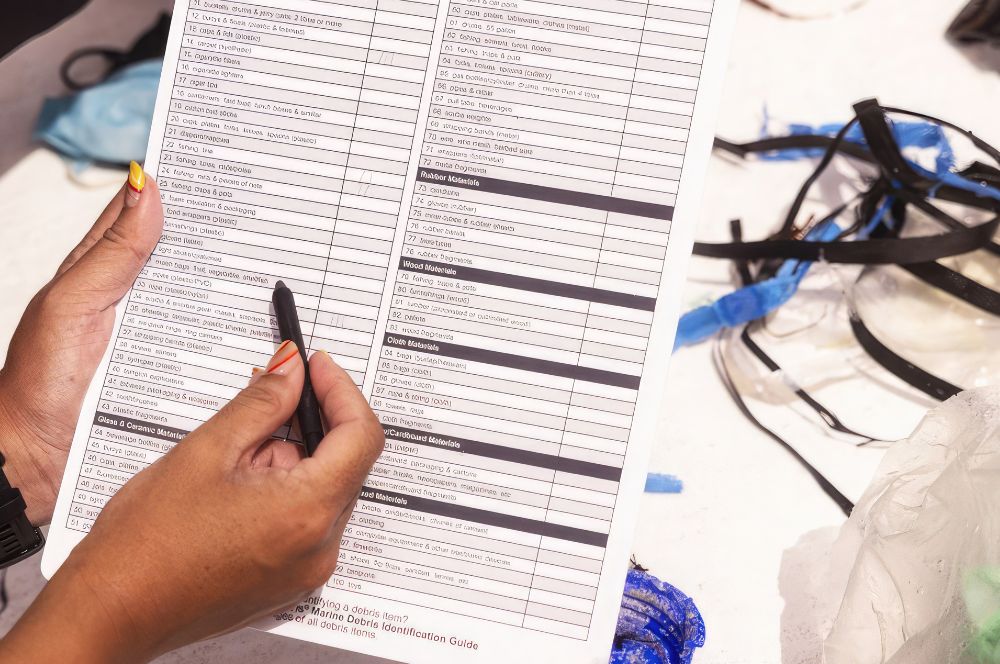
The Dive Against Debris Specialty course is a new addition that allows PADI Open Water Scuba Instructors to educate divers on marine debris. This course is designed to leverage marine debris surveys for debris management and control, enabling divers to directly address the problem by removing debris during their dives. Becoming a Dive Against Debris Diver allows participants to engage in regular Dive Against Debris surveys, making them an active part of the solution to marine pollution.
An eLearning component, requiring 2-4 hours to complete, is included in the course, offering independent study material for the divers. Divers learn to categorise objects that can be safely extracted from the underwater environment and acquire skills in conducting surveys, sorting, documenting, and reporting the debris collected.
The Dive Against Debris Specialty course is open to:
-
PADI Junior Open Water Diver
-
Freediver
-
Advanced Mermaid
-
Individuals with higher certification levels
The initiative extends its reach globally as it aims to empower a vast number of PADI members to train diver volunteers worldwide, contributing to the monitoring of underwater plastic debris.
The Dive Against Debris Course
The Dive Against Debris Course is a practical and rewarding way to contribute to the global fight against marine pollution. Designed to educate divers on marine debris, its impacts, and how to conduct effective underwater cleanups, the course provides the skills and knowledge to make a meaningful difference with each dive.
The course goes beyond simply removing debris. It equips divers with the tools to conduct detailed surveys of the debris collected, including its weight and location. This data is then submitted to the PADI AWARE Foundation’s database, contributing to a collective scientific effort to understand and mitigate the impact of marine debris.
Advancing Your Dive Education
For those looking to further their dive education, the Dive Against Debris Specialty course provides an excellent opportunity. Not only does it equip divers with the skills to make a tangible difference in the fight against marine pollution, but it also contributes to the progression towards the elite Master Scuba Diver rating.
Completion of the Dive Against Debris survey dive may also count towards the Advanced Open Water Diver certification. This integration of speciality courses into broader diver education demonstrates how divers can enhance their skills while making a significant contribution to marine conservation.
Summary
In conclusion, the fight against marine debris is a shared responsibility. From the individual actions we take to reduce plastic consumption to the global initiatives like Dive Against Debris that unite divers worldwide in the fight against marine pollution, every effort counts. With international cooperation and a strong commitment to monitoring and accountability, we can turn the tide on marine debris and ensure healthier oceans for future generations.
However, the journey doesn’t end here. As individuals, we have a crucial role to play in this data-driven solution. By becoming a certified debris diver, submitting valuable data, or simply making more sustainable choices in our daily lives, we can contribute to cleaner seas. Remember, every dive counts, and every action matters. The sea has cast its spell. Now, it’s our turn to repay the favour.
Frequently Asked Questions
What is the Dive Against Debris initiative?
The Dive Against Debris initiative is a global effort to clean up underwater debris and advocate for ocean-friendly policies through data collection.
How does plastic end up in the ocean?
Plastic waste ends up in the ocean when it travels from landfills through rivers and ocean currents, especially during heavy rain events. This surge can carry trash into the ocean.
What is the global plastics treaty?
The global plastics treaty is a legally binding international agreement being developed to address the entire life cycle of plastics, including their production, design, and disposal, with the aim of decreasing plastic pollution and setting up a cooperative monitoring system.
How can I contribute to the fight against marine pollution?
You can contribute to the fight against marine pollution by reducing plastic consumption, participating in beach clean-ups, supporting recycling, submitting marine debris data, and becoming a certified debris diver through the Dive Against Debris Specialty course. These actions can make a significant impact in tackling this issue.
What is a debris diver?
A debris diver is a certified diver who has completed the Dive Against Debris Specialty course, which trains them in conducting underwater cleanups and documenting the debris collected during dives.
Related Posts
-
Eco-Friendly Diving: The Ultimate Guide…
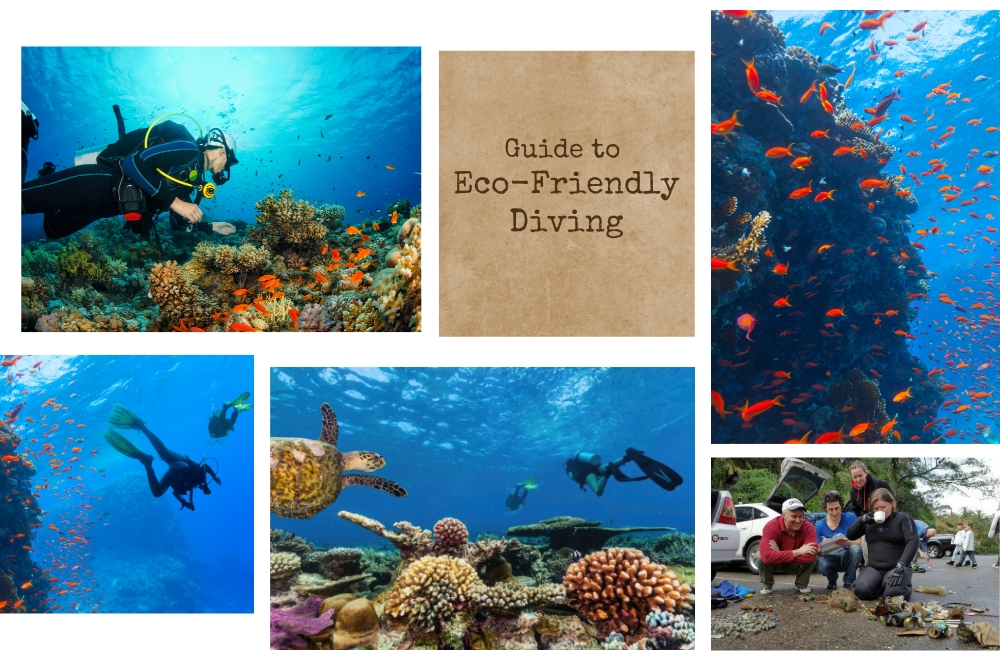
Eco-Friendly Diving:…
The Ultimate Guide to Eco-Friendly Diving Imagine sliding into the azure depths of the ocean, exploring vibrant […] -
Join the Fight Against Marine Debris…
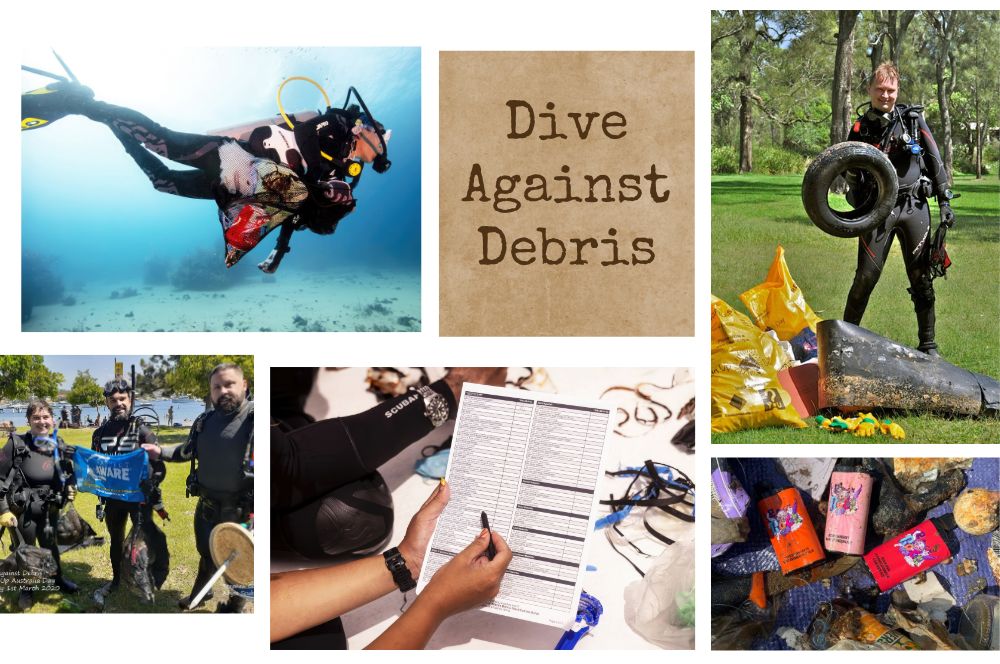
Join the Fight Against…
Joining the Fight Against Marine Debris with Dive Against Debris Project Are you passionate about protecting […] -
Scuba Diving for Science: Citizen Scientists…
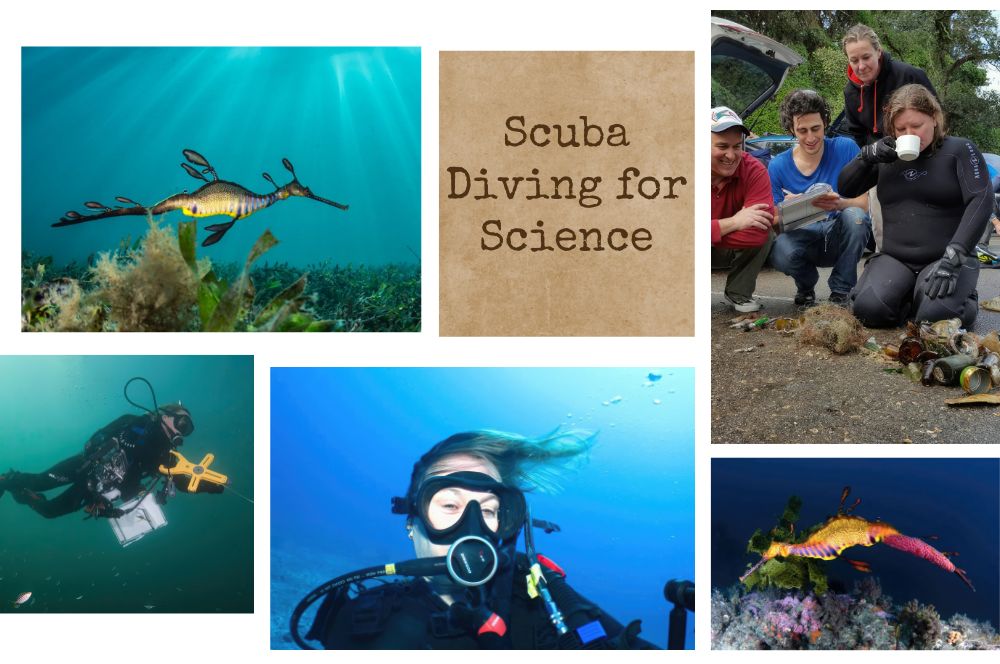
Scuba Diving for Science:…
Scuba Diving for Science: How Citizen Scientists are Transforming Marine Research Welcome, fellow divers! […] -
How to be an Ethical Scuba Diver: A…
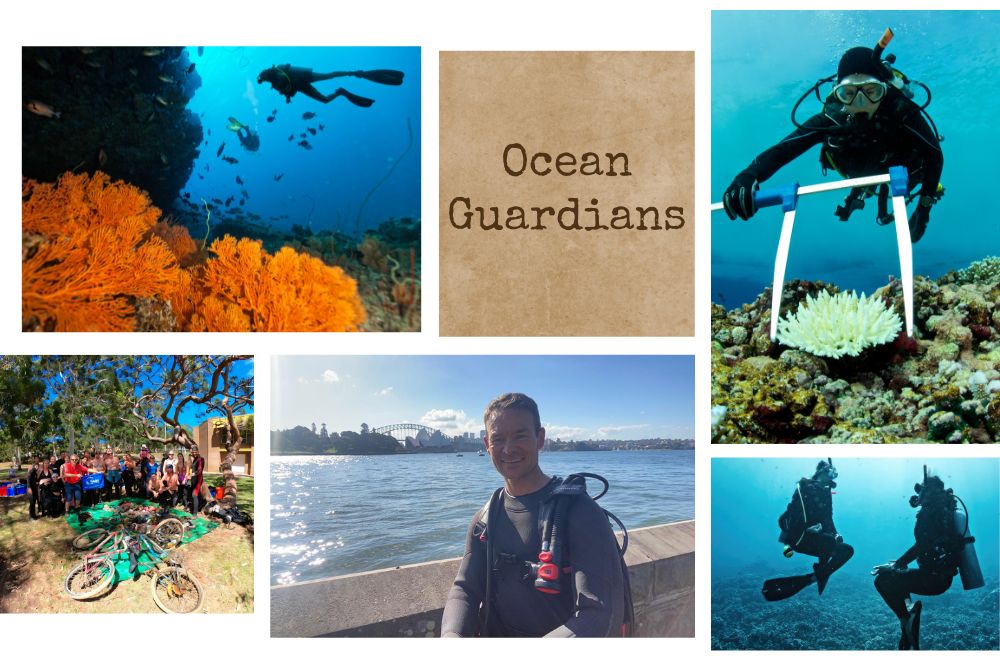
How to be an Ethical…
Ocean Guardians: Exploring the Ethical Considerations of Scuba Diving The vast and enigmatic ocean lures […]
Recent Posts
